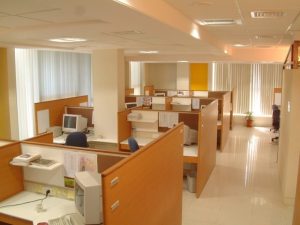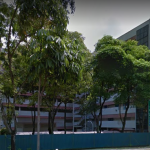Offices will be reimagined as a social hub to provide a culture that can’t be replicated via remote working and serves as a social hub for employees to connect on common goals, purpose and vision
Employees across Asia Pacific have adapted to extensive work from home arrangements, but most are eager to return to the office. At the height of the COVID-19 pandemic across Asia Pacific, an average of 68% of employees surveyed regionally worked from home. According to JLL, 61% of the same respondents working remotely said they missed going to the office and would favor a hybrid model combining more flexible work arrangements in the future.

JLL’s new Asia Pacific report Home and away: the new hybrid workplace argues that employees consistently believed they while they enjoy the freedom of working from home, they miss the human interaction and face-to-face collaboration that working in a professional office environment provides. In Singapore, 54% of local respondents missed the office while working from home, citing the lack of social interactions as the biggest factor.
Millennials in Asia Pacific said they missed the office more than other age groups at 66% and highlighted the office experience’s benefits: human interactions, professional environment, and place for focused work. Furthermore, 81% of Millennials strongly agreed that they felt technology ready, and 52% said they were more productive working from home. However, some could not afford accommodation with space and amenities vital for successful homeworking.
“Employees across Asia Pacific have successfully transitioned to remote working, but our interactions also suggest that many now crave the office environment’s cultural and human experience. It is becoming clearer that the office is here to stay, but greater acceptance of remote working will force a new workplace model for many corporations regionally,” says Anthony Couse, CEO, Asia Pacific, JLL.
The evolving expectations of employees for hybrid work arrangements will have clear implications for corporate real estate in establishing a shared purpose and culture, says JLL. Respondents surveyed revealed that 29% of employees in the region are very confident about their company’s future, and 27% were very confident in their own prospects. Millennials were even more optimistic on both counts (35% and 34%, respectively).
As a result, respondents believe that employers have a responsibility to foster this sense of optimism, whether their teams are working from home or in the office and as businesses, enhance human performance and productivity wherever their workers are.
Key considerations for employers exploring a hybrid offices model include:
- Office space is here to stay: Higher acceptance of remote working will lead to a more distributed and diverse workforce but this will come with its own challenges on productivity and efficiency. Office space will continue to hold its importance, in most instances as the optimal working environment.
- Offices will be reimagined as social hubs: The office provides a culture that can’t be replicated via remote working and serves as a social hub for employees to connect on common goals, purpose and vision. Repurposed or redesigned work areas will be required to provide infrastructure for collaboration among the split teams of remote and on-site staff.
- Future footprint will facilitate choices and flexibility: Work from home saw many employees enjoy greater flexibility and control on their personal and professional lives. Corporates will have to redefine their real estate footprint, leveraging distributed and liquid spaces. Home offices, co-working places, satellite offices and the office HQ will all have to co-exist – leading to a truly hybrid office model.
“Offices will continue to play a central role in defining company culture, creating a shared purpose, and meeting employee needs for personal and professional fulfilment. However, COVID-19 will impact how the office looks and feels, as hybrid models comprising flexible work arrangements become mainstream,” says Chris Archibold, Head of Leasing, JLL Singapore.
“Traditional offices will have to reinvent themselves to stay relevant. This could drive redevelopment of ageing office assets in the CBD and help shift Singapore’s office landscape towards further decentralisation.”
JLL’s Home and away: the new hybrid workplace was based on the views of 1,500 employees from five countries across Asia Pacific. Respondents were asked about the impact of extended periods of remote work, access to technology, and which changes in professional behaviour will become permanent.
An earlier report by JLL said that new offices demand will require companies to focus on design and decentralisation as they prepare for re-entry.
As organisations prepare to return to the office amid an easing of lockdown restrictions across Asia Pacific, many are considering how their corporate real estate portfolios should look in the ‘next normal’. According to a survey by JLL, more than 80% of its clients have started to explore alternatives to keep their business operational or carry out certain modifications to their offices.
The real estate firm’s latest ‘Guide for Workplace Design Considerations’ outlines some short- to long-term priorities, including space planning solutions, tech-enabled experiences and operational functions that help corporates navigate the complex re-entry journey. The guide also highlights how companies can re-assess their office footprint with decentralization scenarios or re-designs that can protect their businesses and people in the long run.
“Office re-entry will be a gradual and multi-phased journey that is likely to evolve as economies open up again,” says Martin Hinge, Executive Managing Director, Project & Development Services, JLL Asia Pacific. “As people head back to the office, our clients’ number one priority is to ensure that they’re welcoming people back to a safe and healthy environment.”
This office demand includes setting up private, enclosed workstations, fitting social and break-out spaces with labels or physical dividers, or even installing thermal imaging technology in the building lobby and reception areas.






